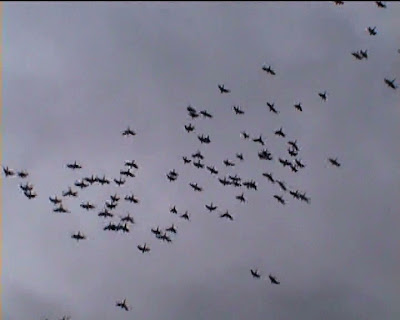
On the third day we finally were allowed to cross the river to Pacaya-Samiria. We initially went river dolphin spotting and managed to get a few good shots of dolphins gracefully jumping out of the water.






We then got an introduction to the many species of fish caught for food ...


... and particularly the great paich which is commonly poached, resulting in the murder of some park wardens with machetes when they approached a poaching camp and confiscated nets and fishing equippment.


 Conservation of the otters was also a priority.
Conservation of the otters was also a priority.We then went further into the reserve through the many channels and lagoons by canoe. The wetlands were full of diverse bird life, including the giant tuiuius, blue and white herons, several kinds of small wading bird, kingfishers, shags, white crested falcons, canary-like birds and a variety of grouse likfe game birds.
Many of these were shy and quite distant and better views of them can be found in the Pantanaal section of this blog where we were able to photograph them close up.
Many of these were shy and quite distant and better views of them can be found in the Pantanaal section of this blog where we were able to photograph them close up.










... and went out in the night to call for crocodiles.




In the morning we went off on a long jungle walk ...






Giant snail shells along the track ...










 The insects included butterflies, moths, dragonflies, termites, hornets, leaf-cutter ants and a huge stick insect.
The insects included butterflies, moths, dragonflies, termites, hornets, leaf-cutter ants and a huge stick insect.


There were two prominent species of monkey a smaller one with 'binocular' eye markings ...



and a larger howler monkey with darker brown markings ...


radiant squirrels ... and the ground markings of a panther on the prowl.


A giant hevea tree whose latex could be rolled on the spot into raw bubber.





We walked out to the lagoon's edge to give mating calls to attract the female crocodiles ...




and then journed to spend the night at the reserve accommodation on the far side of the park.








We then did a round of fishing for all the small lagoon species including piranas.





... accompanied by mating blue dragonflies ...

... and yellow macaws ...










We finally returned back through the lagoons, filming further bird life and cayman.


































Its location is maybe its most distinctive trait. But it also has some other subtle details: the light that issues when the sun hits its façade and its peculiar way of representing the best of the Cuban pictography. Even though it is not considered the emblem hotel of Cuba, condition carried by the National Hotel, it is one of the best known in Cuba.Need to Book a hotel Book it at- hotel samiria iquitos
ReplyDelete